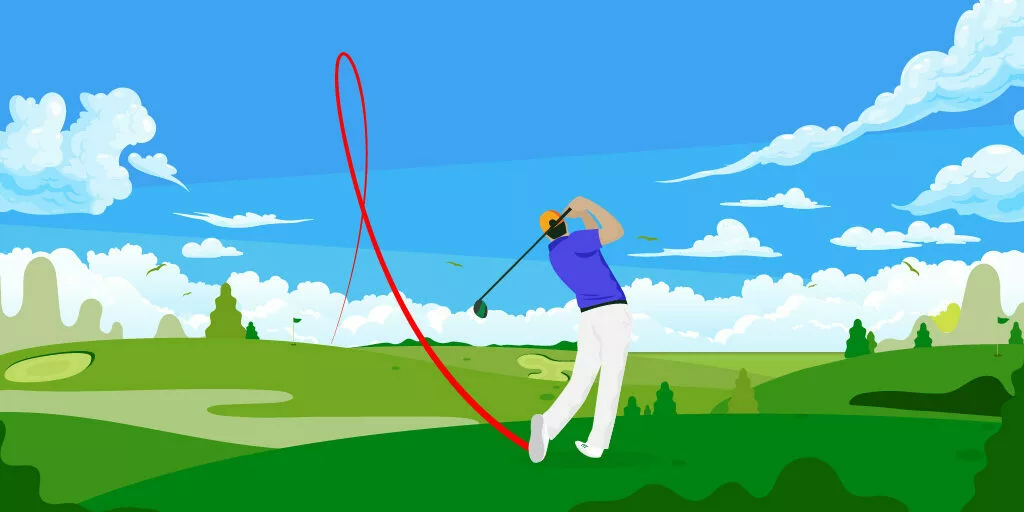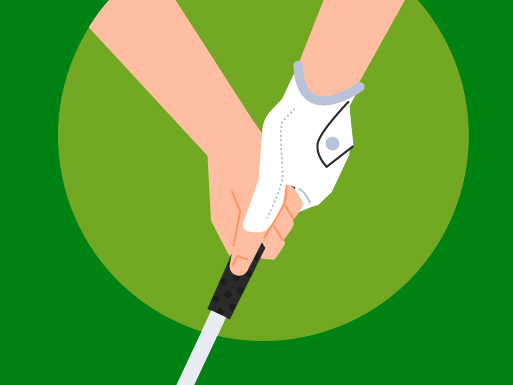
A hook in golf is a shot that curves sharply from right to left (for right-handed golfers) or from left to right (for left-handed golfers), often resulting in an undesired outcome. This ball flight pattern can be a source of immense frustration for many amateur golfers, as it can significantly impact their overall game and score.
The causes of hooking a driver are varied, and understanding these reasons is crucial to finding effective solutions. This article will explore the common causes of driver hooks and provide practical tips to help you overcome this issue and improve your golf game. By identifying and addressing the root causes, you can work towards straighter shots and more consistent play on the course.
Key Takeaways
- Identify hook causes: Grip, alignment, swing path, swing plane, and clubface control contribute to hooks
- Implement solutions: Adjust grip, correct alignment, improve swing path and plane, and square clubface at impact
- Practice regularly: Dedication and persistence are key to overcoming driver hooks and enhancing golf performance
Common Causes of Hooking a Driver
Strong Grip
The role of grip in clubface control
Your grip plays a significant role in controlling the clubface throughout your swing. A proper grip ensures that you can consistently square the clubface at impact, leading to straighter shots.
How a strong grip can lead to a closed clubface at impact
A strong grip, characterized by both hands being turned too far to the right (for right-handed golfers) or left (for left-handed golfers), can cause the clubface to close at impact. This closed clubface imparts a right-to-left spin on the ball (for right-handed golfers), resulting in a hook.
Alignment Issues
The importance of proper alignment for ball flight
Correct alignment is essential for achieving the desired ball flight. Incorrect alignment can lead to compensations during the swing, often resulting in hooks or other undesirable shot shapes.
How misalignment can cause a hook
If you align your body too far to the right of the target (for right-handed golfers) or left (for left-handed golfers), you may unintentionally create an inside-out swing path. This inside-out path can cause the clubface to close at impact, leading to a hook. It is crucial to check and adjust your alignment regularly to ensure consistent ball flight.
Inside-Out Swing Path
Understanding the concept of the "inside-out" swing path
An inside-out swing path refers to the club moving from inside the target line to outside the target line during the downswing. This path is the opposite of an outside-in swing path, which is more common in slicing.
How an "inside-out" swing path can lead to hooking
When the club follows an inside-out path, it can result in the clubface being closed relative to the swing path at impact. This closed clubface imparts a right-to-left spin on the ball (for right-handed golfers), which can cause a hook.
Swing Plane Issues
The role of the swing plane in shaping shots
The swing plane is the angle at which the club travels around your body during the golf swing. An optimal swing plane is crucial for producing consistent and accurate shots.
How an incorrect swing plane can contribute to hooking
If your swing plane is too flat or too upright, it can lead to various swing path issues, including an inside-out swing path. This, in turn, can cause a hook. Improving your swing plane can help you achieve a more consistent ball flight and reduce the likelihood of hooking your driver.

Clubface Position at Impact
The critical moment of impact and its effect on ball flight
The position of the clubface at the moment of impact is one of the essential factors determining ball flight. A square clubface at impact will produce a straight shot, while an open or closed clubface can lead to slices or hooks, respectively.
How a closed clubface at impact can result in a hook
If your clubface is closed relative to the swing path at impact, it will impart a right-to-left spin on the ball (for right-handed golfers), causing a hook. Addressing the factors that lead to a closed clubface, such as grip, alignment, swing path, and swing plane, can help you eliminate hooks and improve your overall game.
Solutions to Fix a Driver Hook
Adjusting Your Grip
Tips for finding the right grip strength and position
To find the right grip strength and position, start by holding the club with your top hand (left hand for right-handed golfers) in a neutral position. The "V" formed by your thumb and index finger should point towards your back shoulder. Next, place your bottom hand on the grip with the "V" of your thumb and index finger pointing to the same shoulder. Experiment with different grip strengths and positions until you find one that feels comfortable and helps to reduce hooking.

Correcting Alignment
Techniques to improve alignment and prevent hooks
To correct alignment issues, start by placing a club or alignment stick on the ground, parallel to your target line, to help guide your stance. Ensure your feet, hips, and shoulders are parallel to this line. Practice hitting shots with this setup to develop a better sense of proper alignment. Regularly check your alignment on the course and during practice sessions to ensure you're staying on track.
Improving Swing Path
Drills to develop a more neutral swing path
To improve your swing path and eliminate the inside-out path that can cause hooks, try the following drill:
- Place a headcover or small object just outside your golf ball and slightly behind it.
- Practice swinging without hitting the headcover or object. This will encourage a more neutral swing path by preventing you from swinging too far from the inside.
- Gradually incorporate this more neutral path into your full swing. As you become more comfortable with this new path, you should see a reduction in hooks and an improvement in overall ball flight.
Fixing Swing Plane Issues
Suggestions for identifying and correcting swing plane problems
To identify swing plane issues, consider recording and analyzing your swing, or work with a golf instructor. Once you've identified the problem, try these tips to correct it:
- Visualize your swing plane as a tilted circle around your body. This mental image can help guide your swing on the correct path.
- Use training aids, like alignment sticks or golf swing plane trainers, to help you feel and understand the correct swing plane.
- Practice drills that focus on maintaining a steady head position and proper weight shift during the swing. These elements can contribute to a more consistent swing plane.
Clubface Control at Impact
Strategies to ensure a square clubface at impact
To improve clubface control and achieve a square clubface at impact, try the following strategies:
- Focus on maintaining a smooth, even tempo throughout your swing to avoid rushing or jerking the clubhead.
- Practice the "hinge and hold" technique, which involves hinging your wrists during the backswing and maintaining that angle throughout the downswing and into impact.
- Work on developing a proper release, in which your hands and wrists naturally rotate through impact, squaring the clubface.
Conclusion
In this article, we've discussed the common causes of hooking a driver, including grip, alignment, swing path, swing plane, and clubface control. We've also provided practical solutions for each issue to help you improve your game.
By addressing these causes and incorporating the suggested solutions into your practice, you can steadily reduce and eventually eliminate hooks from your game. Remember, it takes time and patience to see results, so stay committed to improving.
Understanding the reasons behind driver hooks is essential for any golfer looking to improve their game. By addressing the root causes, you can eliminate hooks and develop a more consistent and accurate golf swing. As you make adjustments and practice regularly, you'll see improvements in your ball flight and overall performance on the course. Remember that progress may be gradual, but with dedication and persistence, you can overcome driver hooks and become a more skilled golfer.
Frequently Asked Questions
Explore answers to frequently asked questions about driver hooks, as we delve into the common causes and solutions to help you straighten your shots and improve your golf game. Get ready to gain insights and tips to overcome the frustration of hooking your driver.